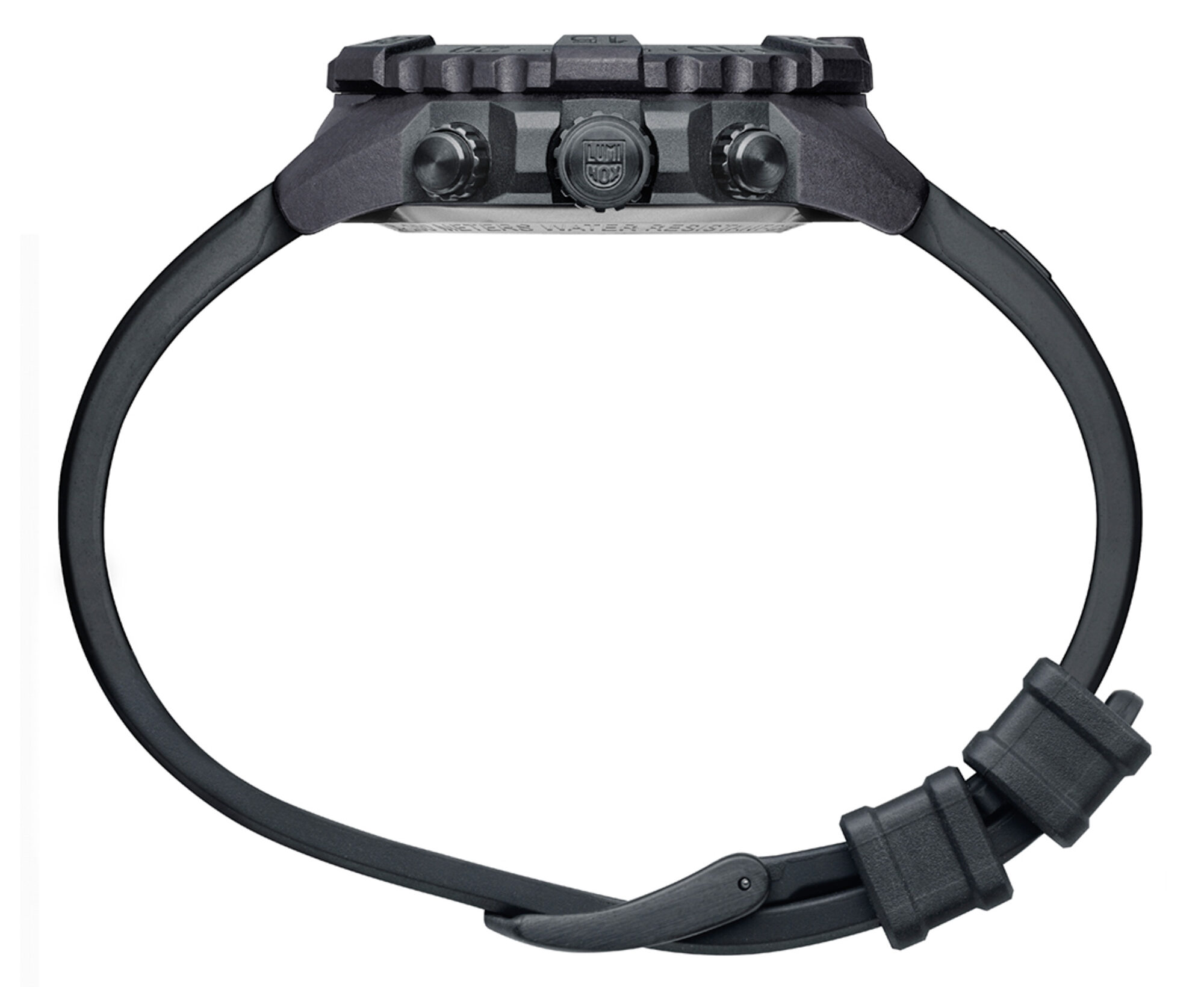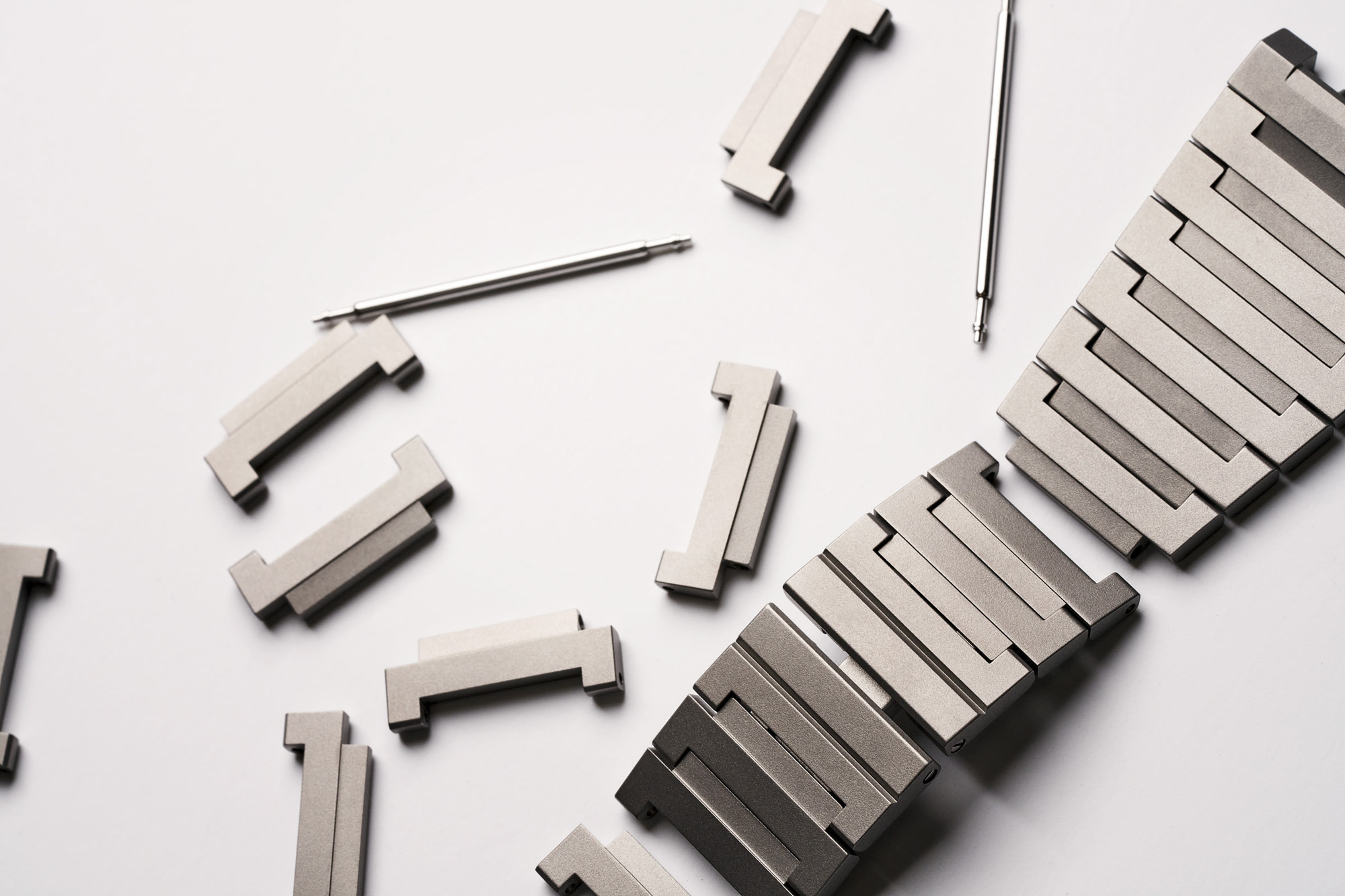
Editor’s Note: This is part of a new series of editorial columns by our senior editorial staff. Every Monday morning, aBlogtoWatch aims to bring you a more personal, eclectic kind of editorial expression than our usual blend of news and hands-on reviews. This new initiative should give our community the chance to get to know our aBlogtoWatch team members better as people and to foster a new kind of discussion removed from the usual constraints of the news cycle. We hope you enjoy reading and interacting with these columns as much as we enjoy creating them. This is the first installment of David Bredan’s column, “Grinding Gears.”
Hello and welcome to my new column, Grinding Gears. My writing and photography gears have been running for nine years here at aBlogtoWatch. That long power reserve is continuously replenished by my privilege to experience and bring you some of the most amazing horological machines ever made. Nevertheless, the smooth running sometimes turns into a crunching and grinding of gears, courtesy of an ever-growing number of recurring issues in watch design and execution, and even in watch buying and wearing trends. Grinding Gears is dedicated to what we all have experienced as problematic components in watches and watchmaking, and how they could potentially be rectified. Please don’t hesitate to share in the comments section below what horology-related issue has been grinding your gears — or just throw a wrench into mine.
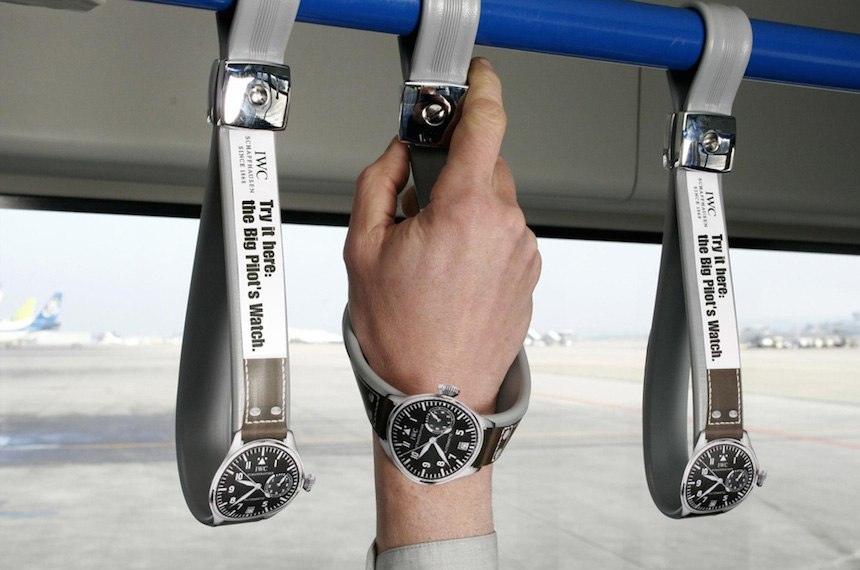
We begin with the wearing comfort of watches. Cheap or expensive, rare or common, worn for horological value or for status — no matter what watch you’re wearing, and why, it’s a pain, literally, if it is uncomfortable to wear. Because of the ubiquitousness of this problem across all price points, we discuss watch-wearing comfort, and lack thereof, in the first installment of Grinding Gears.
The 3 Defining Elements Of Watch-Wearing (Dis-)Comfort
Ergonomics, weight and distribution of weight, and availability of additional comfort features: These are the three pillars of watch-wearing comfort and, frankly, it is shocking how many brands still disregard one or more of these when designing new cases or bracelets, or when placing a new order for watch straps.
Ergonomics
In my experience, the most common issue among watches that are uncomfortable to wear is poor ergonomics — more specifically, little to no regard for ergonomics during the design phase of the case, bracelet, and clasp. Every wrist is different, and it’s nigh impossible to find a design that offers ultimate comfort for all. It is safe to say, though, that an oval cross-section is very common – many wrists have a squashed “O” shape that some watch designers don’t seem to even aspire to follow.
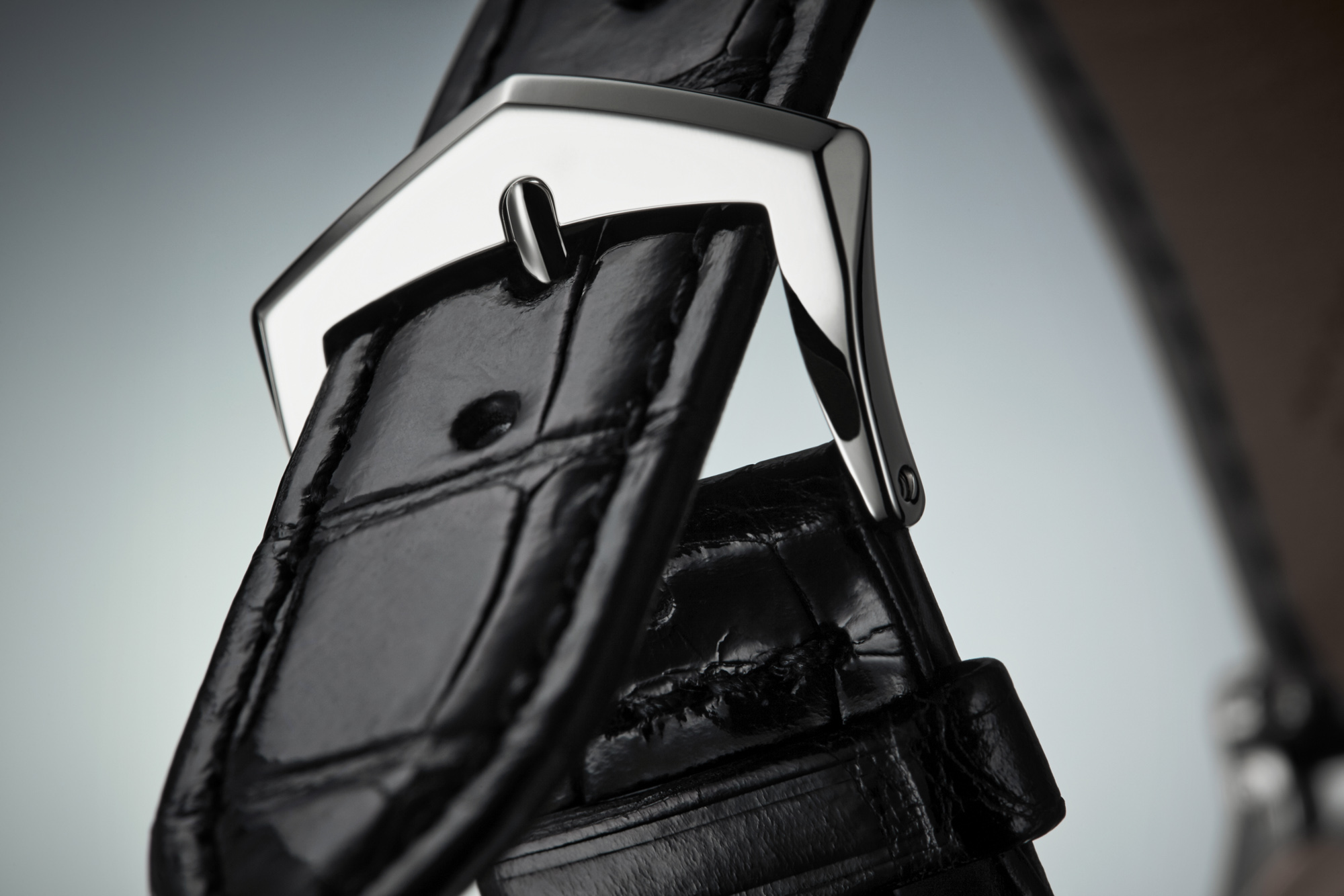
This problem affects leather straps more than it does metal bracelets. You see, luxury brands feel the need to offer high-quality straps, and these often end up being way too stiff for comfort. Sometimes it’s the base material used — alligators have an armor-like skin and, although strap makers use and treat the softest parts during manufacturing, sometimes that’s just not enough. Other times, the section closest to the case, i.e. the part of the strap near the lugs, is too heavily padded. Padding is additional material between the front and the flipside of the strap used to create a more 3D effect and, guess what, to add stiffness. This is a very common issue, and it’s a tough one since certain types of heavy strap padding will never ease up, not even after extensive wear, and will therefore always keep the strap from following the curvature of the wrist. Likewise, fancy straps are often matched to fancy folding clasps. These are charged with forcefully bending the heavily padded and stiff straps to shape and, if the craftspeople have done their job well and the seams in the strap are holding up, your wrist is in for some seriously bad times.
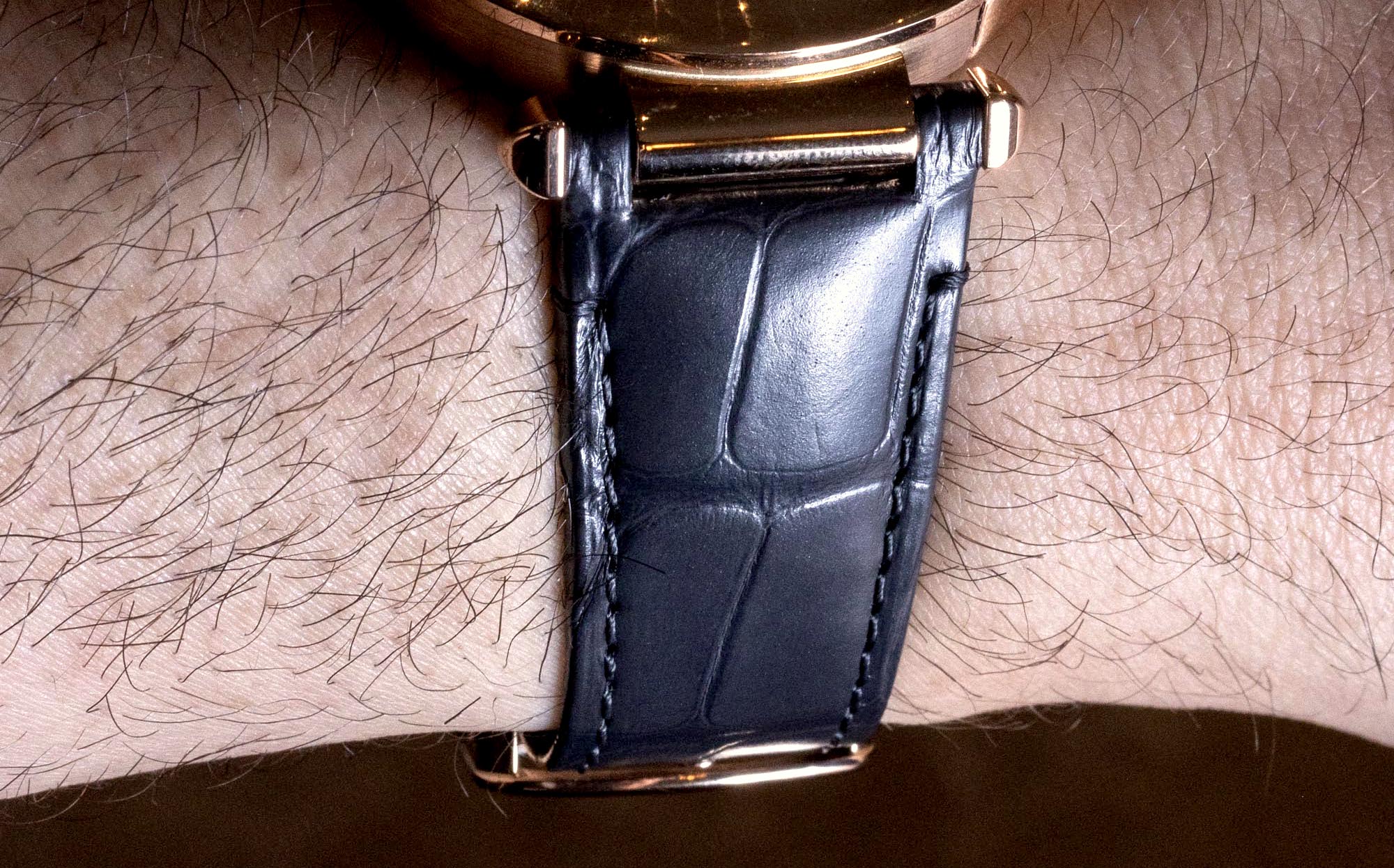
Here is what I recommend: To assess how comfortable your next neat watch, offered on a nice strap and a nicer folding clasp, will likely be to wear, set the clasp to your desired length and close it all up — but do so without wearing the watch. This will allow you to see the shape of the watch and its stiff strap will want to naturally follow. Shockingly, at times, this will be the polar opposite of the cross-section of your wrist, and so the battle between body and object begins. Your wrist and your skin will be charged to slowly and painfully teach its shape to the strap, and through multiple wearing and heat cycles and lots of pinching, this may or may not end successfully.
Avoid watches with stiff straps, heavy padding near the lugs, and folding clasps that have folding parts that are too long and extend up high around your wrist. None of this is necessary: Some brands offer extra-thin and supple alligator straps with tang buckles. Seek these out if you want to have the luxurious aesthetics of a nice strap without all the discomfort of a stiff strap and a pinching clasp.

Bracelets are a somewhat different matter as, in my experience, it is far less common for bracelets to under-perform in ergonomics. Whether equipped with 3, 5, or 7 piece-links or even more, most bracelets made today do a good job at following the curvature of the wrist. A notable exception to this is the so-called Milanese bracelet, a woven mesh design that has apparently removed all the terribleness of other bracelets and accumulated them all in itself. Despite having tiny links — generally speaking, a great thing when it comes to improving comfort — it is needlessly stiff and many of its executions, therefore, struggle greatly at following the curves of the wrist. Furthermore, it’s the most likely to pinch and pull hairs, irrespective of whether it’s worn tight or loose, in the cold or in the heat. Some people prefer the look and actually enjoy the fit. What I would recommend, though, is wearing one of these for as long as you possibly can during a test period in the boutique or with a borrowed item before committing based on the looks and a brief pre-purchase experience.
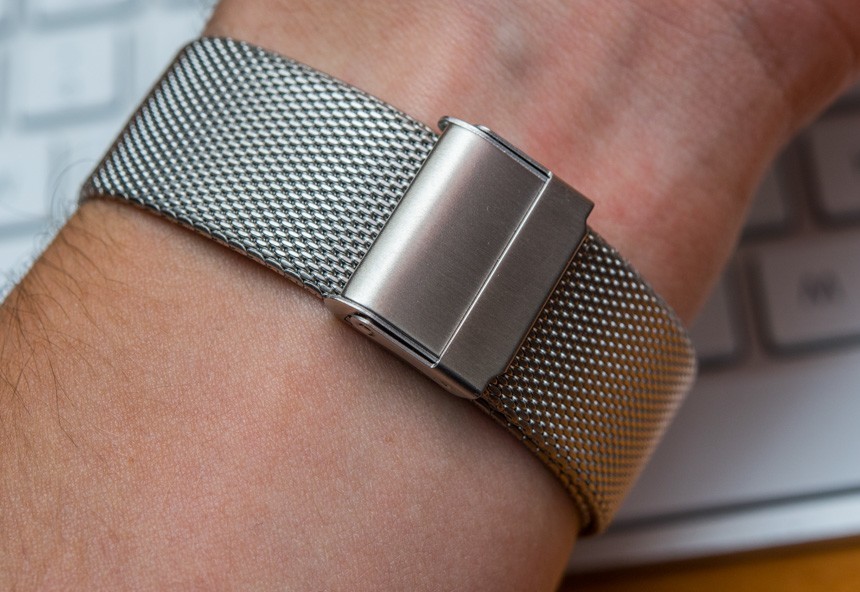
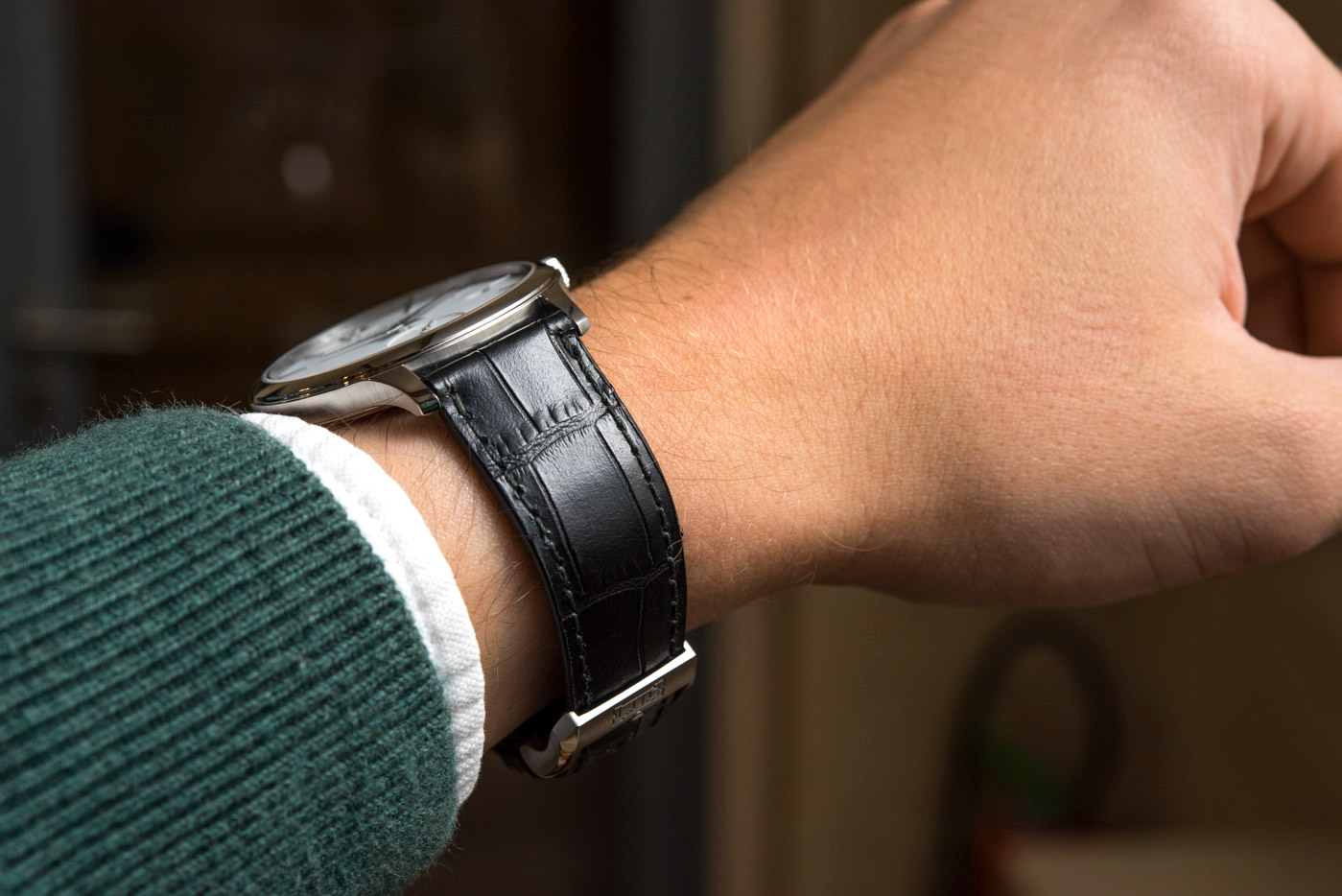
Although not perfect, this example isn’t too far: You can see how the strap follows an “S” shape, setting off a bit too tight right after the lug, heading heavily “downward” and against the wrist. However, because it isn’t too heavily padded, it soon begins to turn flex and follow the protruding edge of the wrist. And all it takes is a tang buckle to keep things at bay — no need for a heavy and uncomfortable folding clasp. Ariel has addressed “deplorable watch strap deployant clasps” here; be sure to read his take to learn more about the matter.
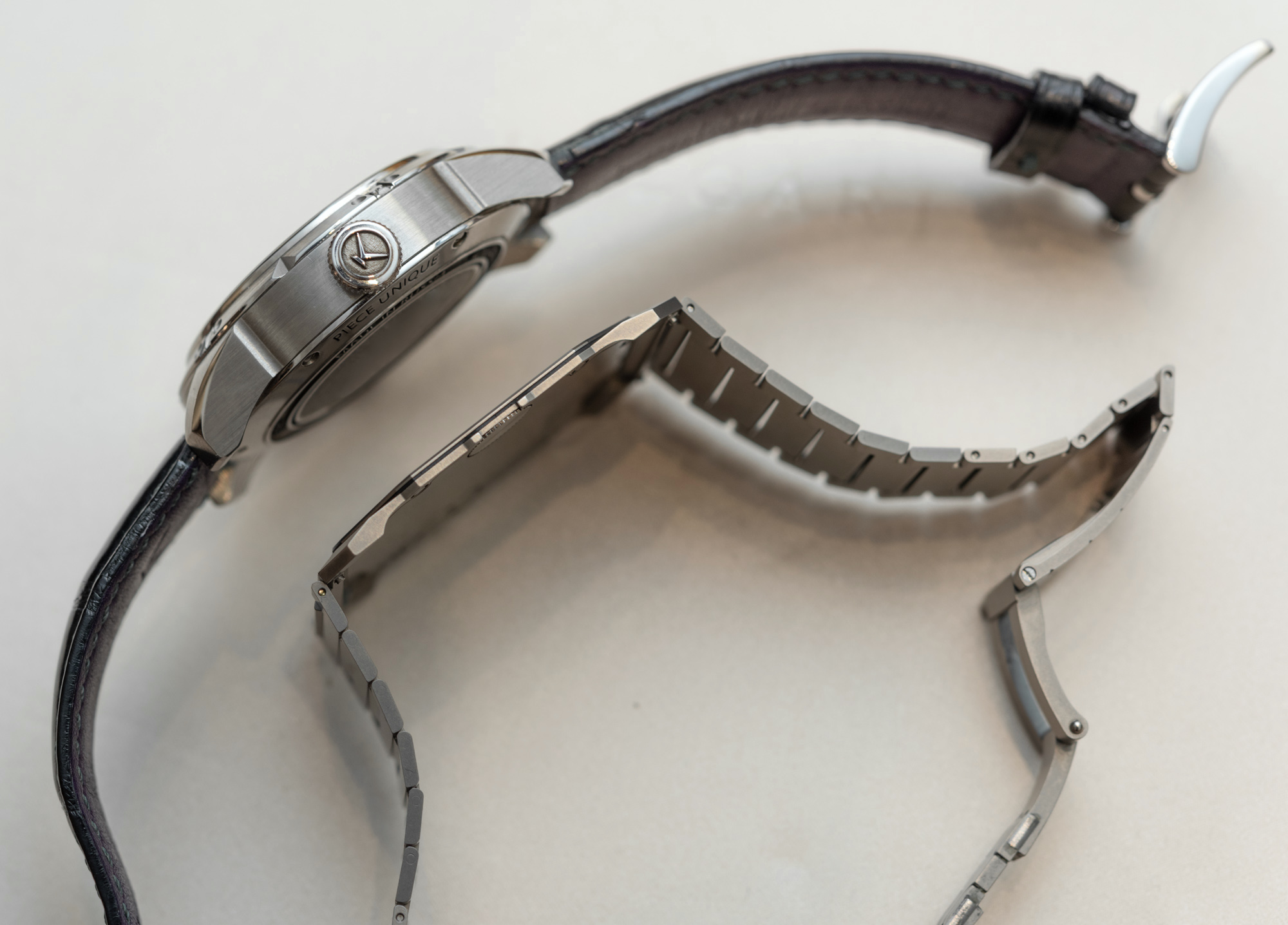
Weight & Its Distribution
In my experience, watches are often uncomfortable because they are too heavy. We all have different levels of tolerance when it comes to the weight of the object we strap to and wear around the wrist for hours. Fortunately, there are plenty of watch brands out there that will happily provide a diverse selection of case and bracelet materials, and one of the goals when doing so is to attain a different “wrist feel.” Brands that offer a titanium alternative to their watches do so because some of us prefer a watch to be as light as it can be — the way a block of steel, often secured around the wrist by a chain of steel, is just too much to handle from dawn till dusk. By contrast, titanium feels noticeably lighter, is less prone to wobble around at every other movement, and has arguably better, more comfortable thermal attributes, as well. Some others expect “a quality watch” to feel as heavy as it can be, opting if they can afford it for platinum — the opposite of titanium. It is true, nothing feels like platinum on the wrist; even the heft of 18k gold feels insignificant in comparison.
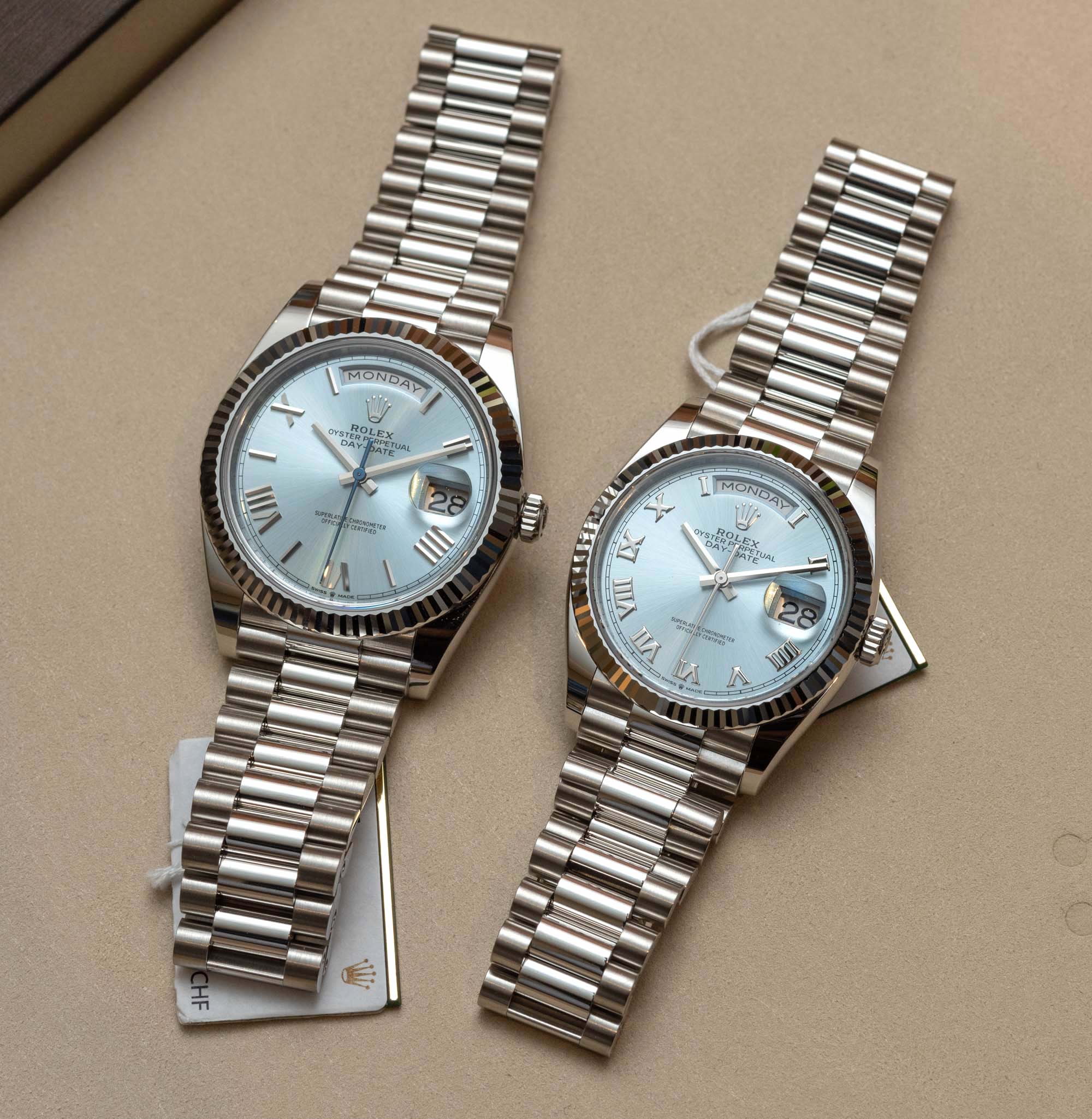
The issue is that the greater the weight, or heft, of a watch, the keener it is to highlight issues with the ergonomics of the case, lugs, bracelet integration, bracelet link, and clasp design. If these fail to add up to anything short of excellent, you’ll certainly be reminded of that shortcoming often. Take the Rolex Day-Date 36 and 40, for example: Look at how much wider every link and lug has to be to accommodate that extra 4 millimeters: Rolex knew that this immense heft had to be distributed over a wider footprint across the entire watch, otherwise it would be top-heavy and the watch head would shift uncontrollably back and forth, beating its owner up in the process.
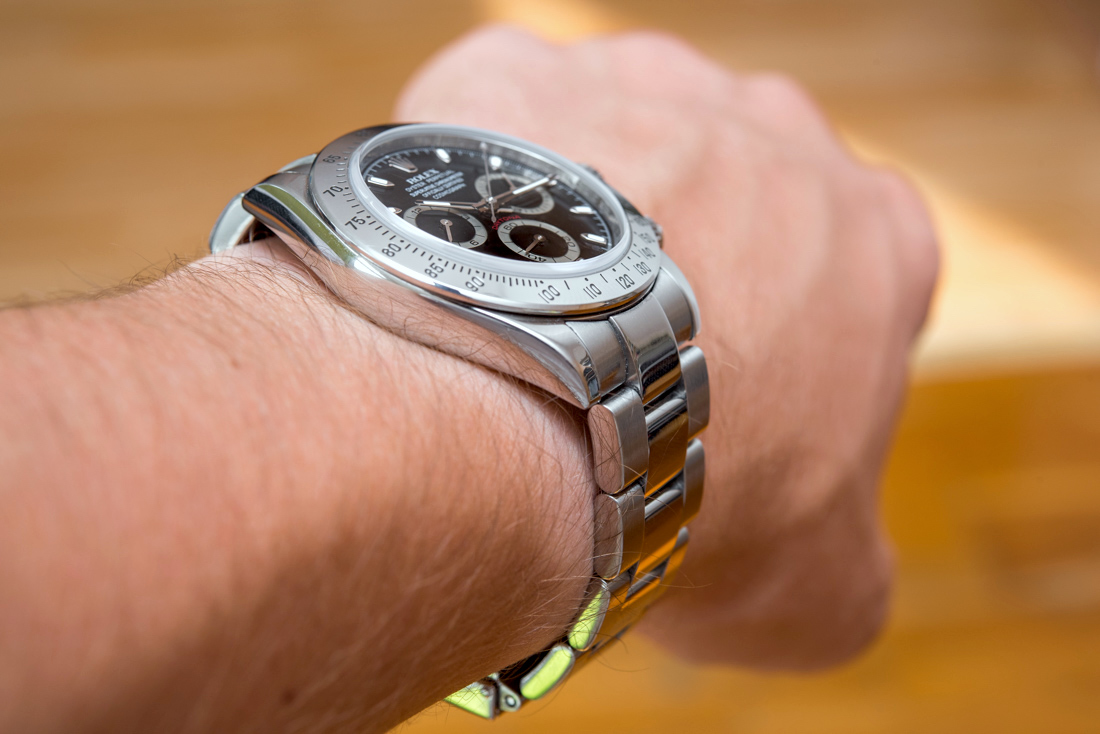
An interesting thing to look for on other Rolex watches is the often rather large gap that exists between the top (12 o’clock) end-link and the wrist, and between the clasp and the wrist diagonal from that. Certain watches tend to shift forward (in other words away from the wearer) as though they were trying to rotate around the wrist in a counter-clockwise direction. Despite the neatly shaped lugs and the relatively large footprint, somehow the length of either side of the bracelet, the design of the clasp and the end-links, as well as the weight distribution of the piece rotates the whole assembly toward the outer edge of the wrist. Not all bracelet-equipped watches do this, but many Rolex watches do. And yet, few ever seem to complain about this detail and/or Rolex wearing comfort.
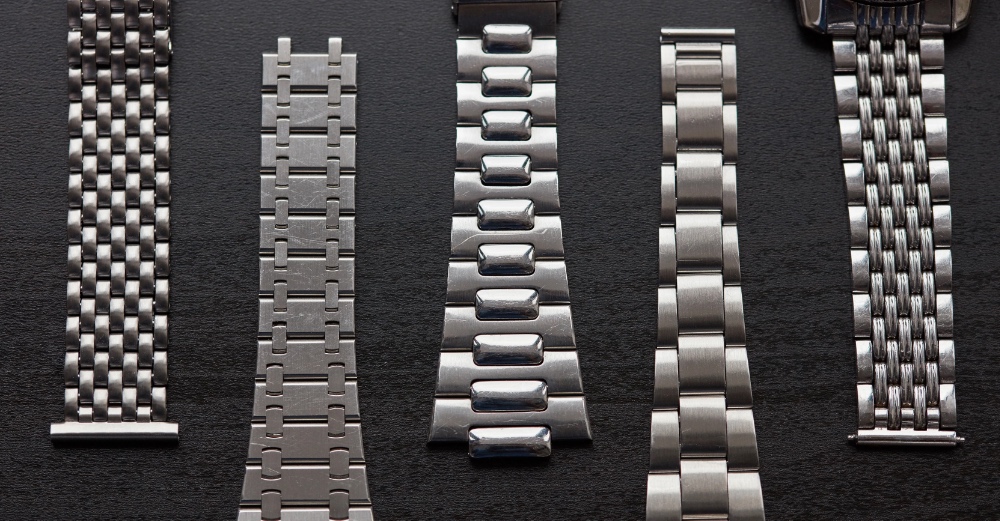
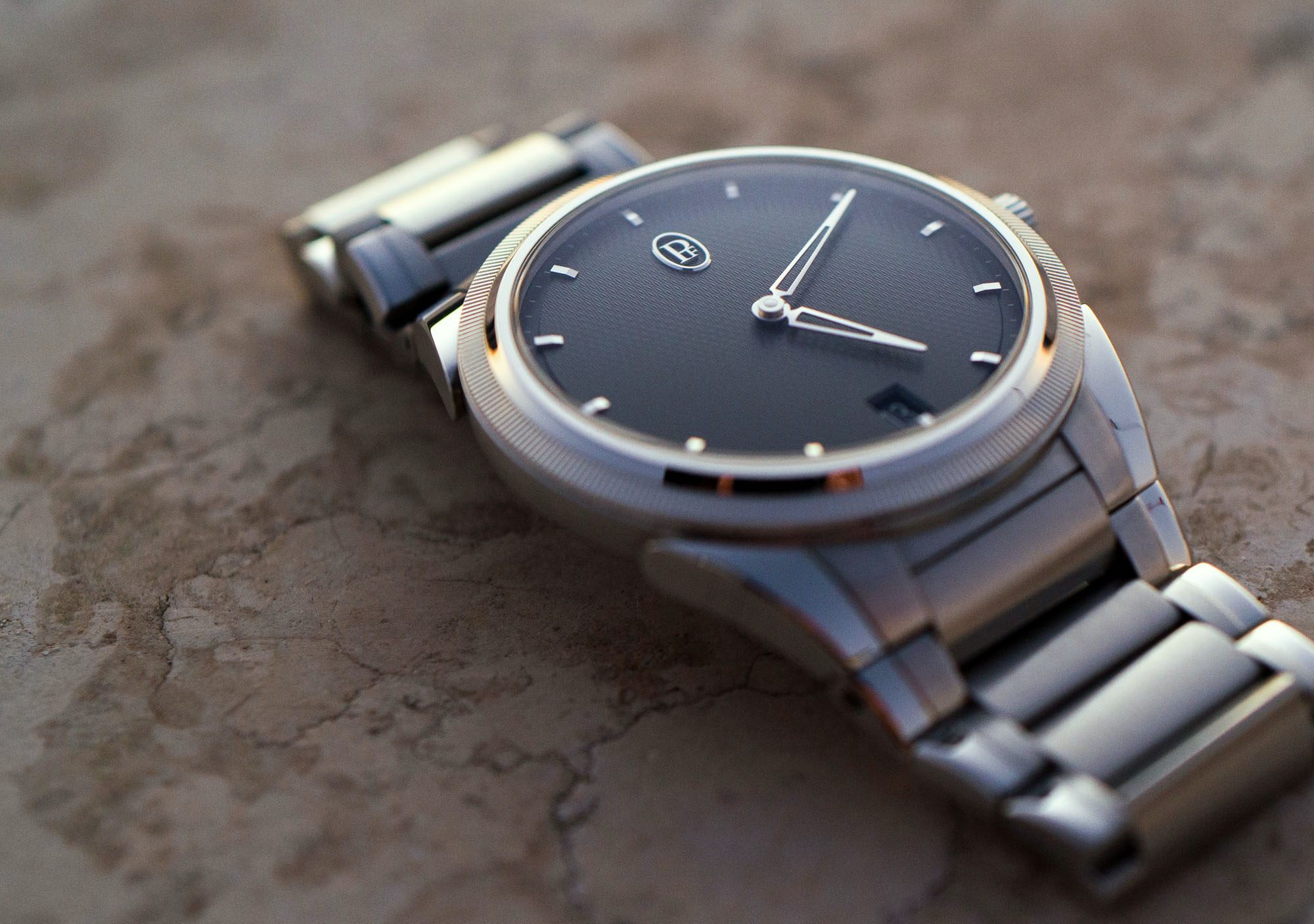
Two details that do wonders at securing watches safely and comfortably are the deep integration of the end-link between the lugs and the flexibility of the links within the bracelet. Take a look at this Parmigiani Tonda PF above: The end-link goes right up and below the bezel, flanked by long lugs, followed by short and highly flexible links. It is the best of both worlds, and all it takes to recognize that is to see how flexible the bracelet is when it is laid down as it is in the picture above. It takes just one link to make a full 180° turn, which implies its ability to follow the imperfect, “squashed-O” shape of the wrist beautifully. Narrow and flexible links and a deep integration have long been a magic recipe — and yet many manufacturers still don’t want to (or can’t) follow it.
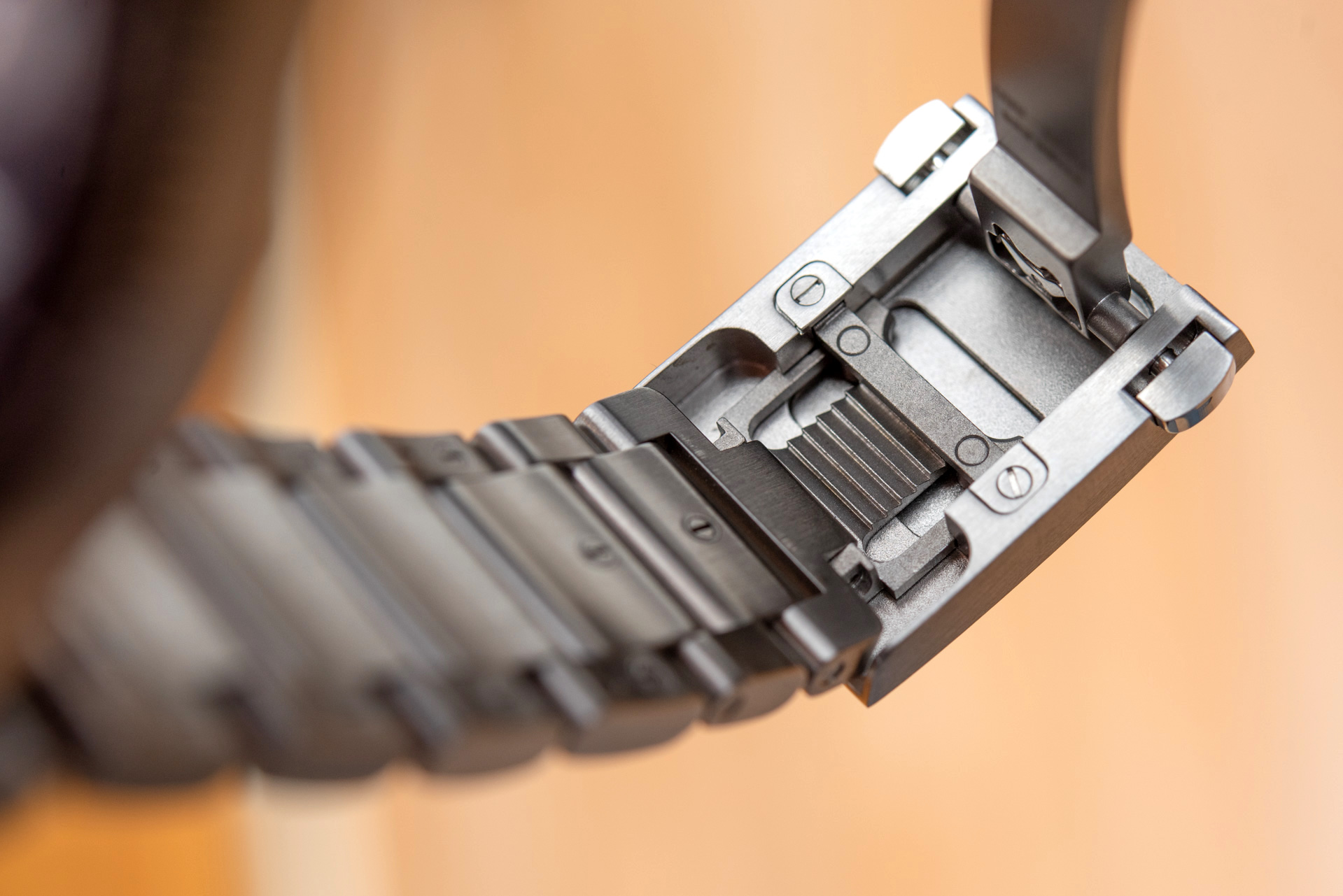
Availability Of Additional Comfort Features
The following little details can make a solid watch feel excellent to wear and can sometimes transform an otherwise desirable watch with terrible ergonomics into something one will at least not hate to wear. The most notable comfort feature is micro-adjust, something that we have for years been saying should be included in the bracelet/clasp assembly of every watch priced over, say, $2,000. There really is no excuse for excluding these — it’s either cost-cutting or lack of motivation that even major luxury brands still, to this day, decide not to include these in all their bracelet-equipped watches.
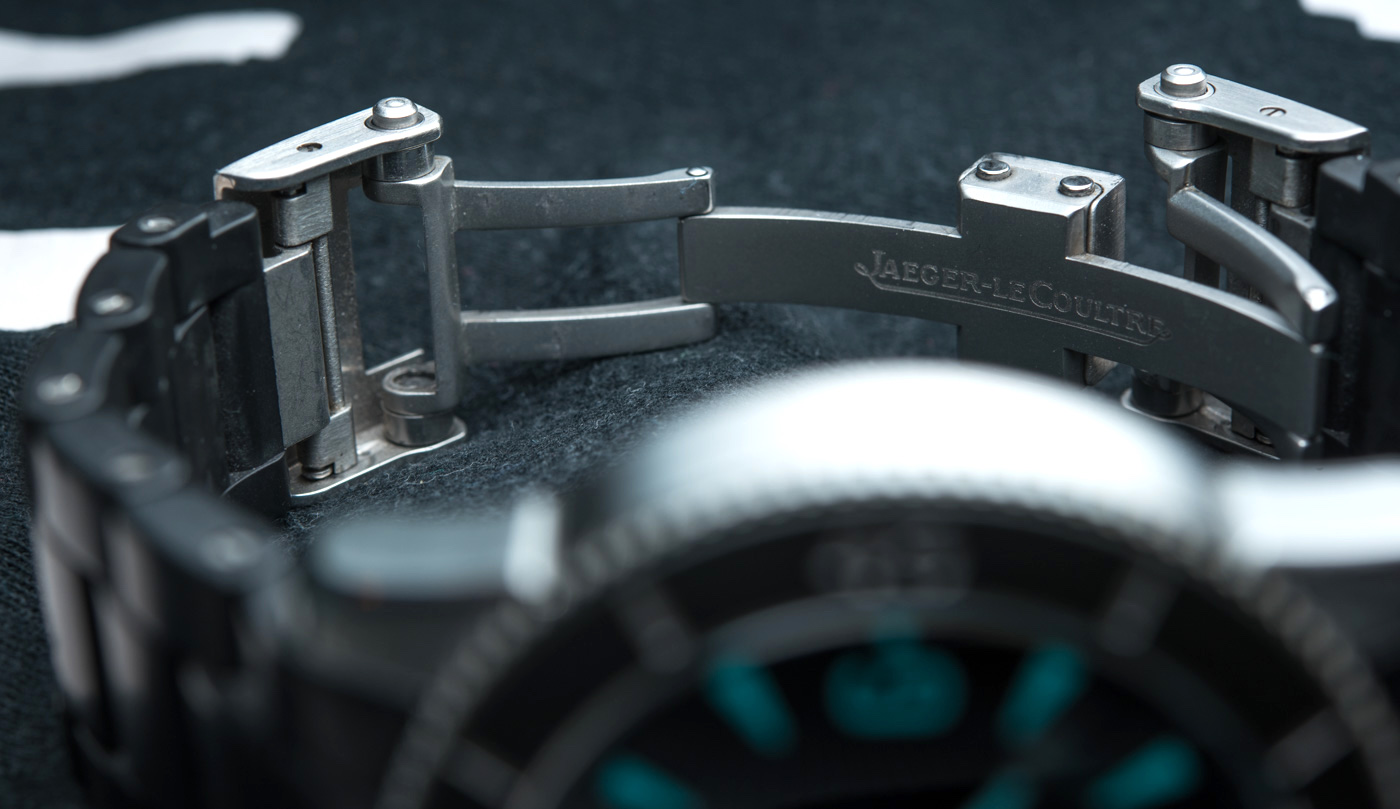
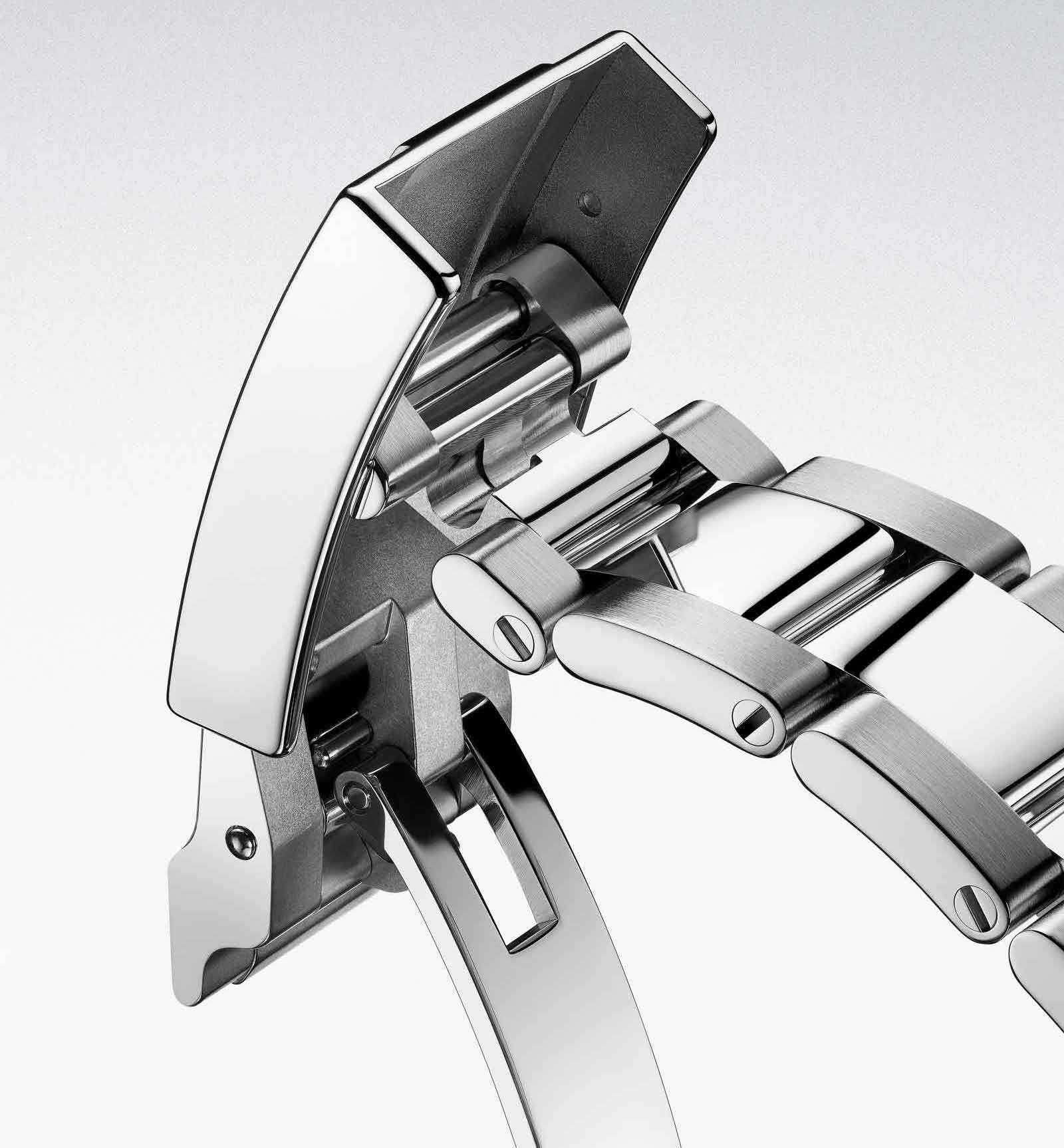
From Rolex’s Easylink to Jaeger-LeCoultre’s (and other brands’) eerily similar solution of links easily folding over themselves to shorten or lengthen the bracelet, to gradually adjustable, so-called gliding extensions to virtually useless divers’ extensions that are just too long at 20mm (0.8 inches) for everyday use (unless your wrist expands and contracts that much), a huge variety of comfort extensions systems have made their way into clasps and bracelets. Citizen and others have proven that watches priced at hundreds (not thousands) of dollars can have tool-free, wonderfully elegant systems integrated into their clasps. Customers should, if at all possible, hold brands accountable if they don’t offer such a solution, and a good one at that, from the factory.
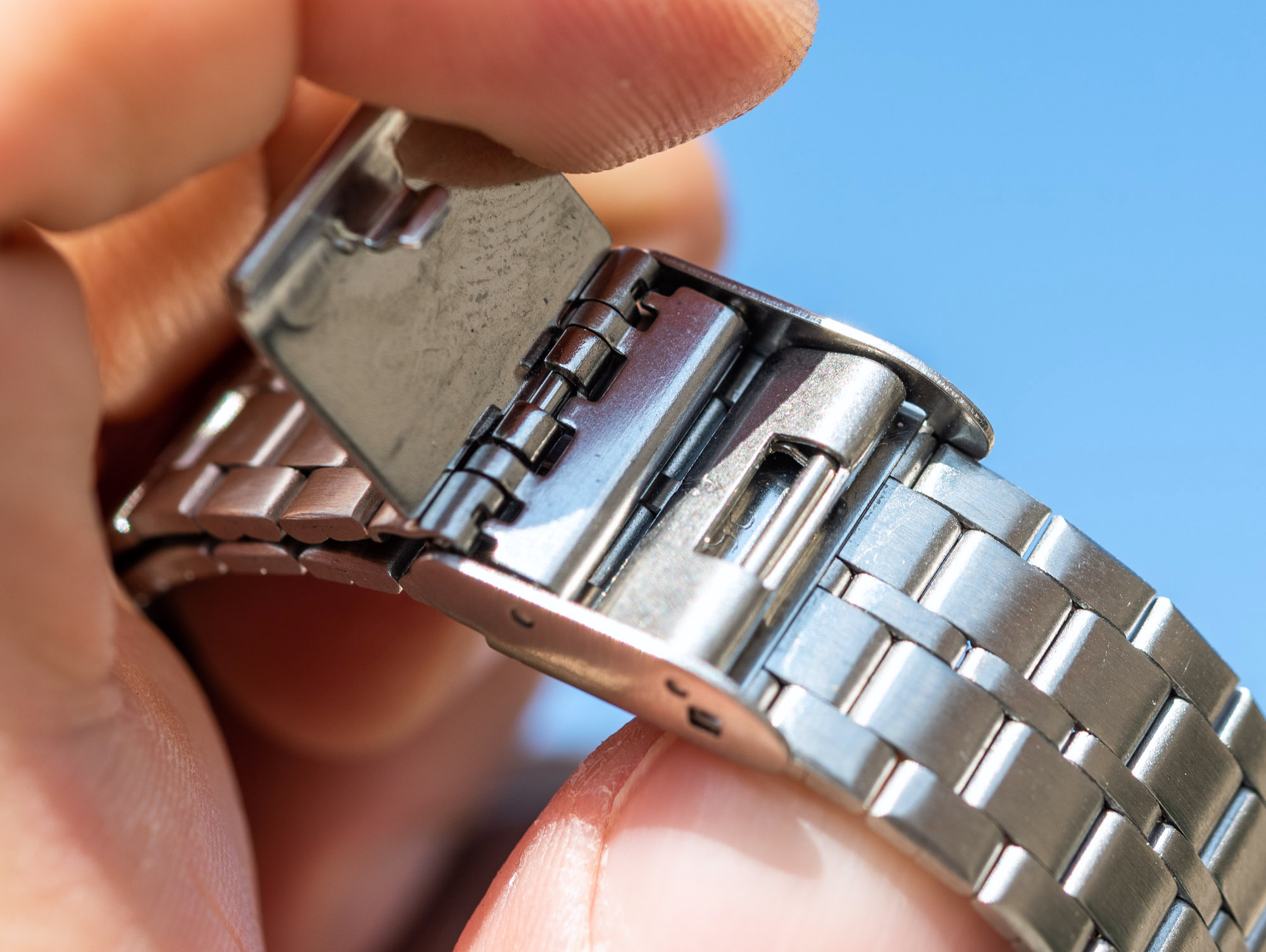
If you are curious about comfort features at the bottom end of the pricing food chain, the recently reviewed, cheapest diamond-set watch, the Casio A159WAD-1D has a sliding and folding clasp like the one you see above. This $70 watch (sometimes going for $35) has a fantastically comfortable bracelet with a latch that can be adjusted using a flathead screwdriver or other basic tool to unlatch it and slide to the desired position. Clumsy, impossible to use without the use of a metal object, and not without the threat of severe hair-pulling — yet sublimely comfortable, in my experience. Things can only improve from here, and bracelets and clasps that require any tool (toothpick or whatever else) to adjust at prices tens and hundreds of times than this Casio should, frankly, be considered unacceptable.
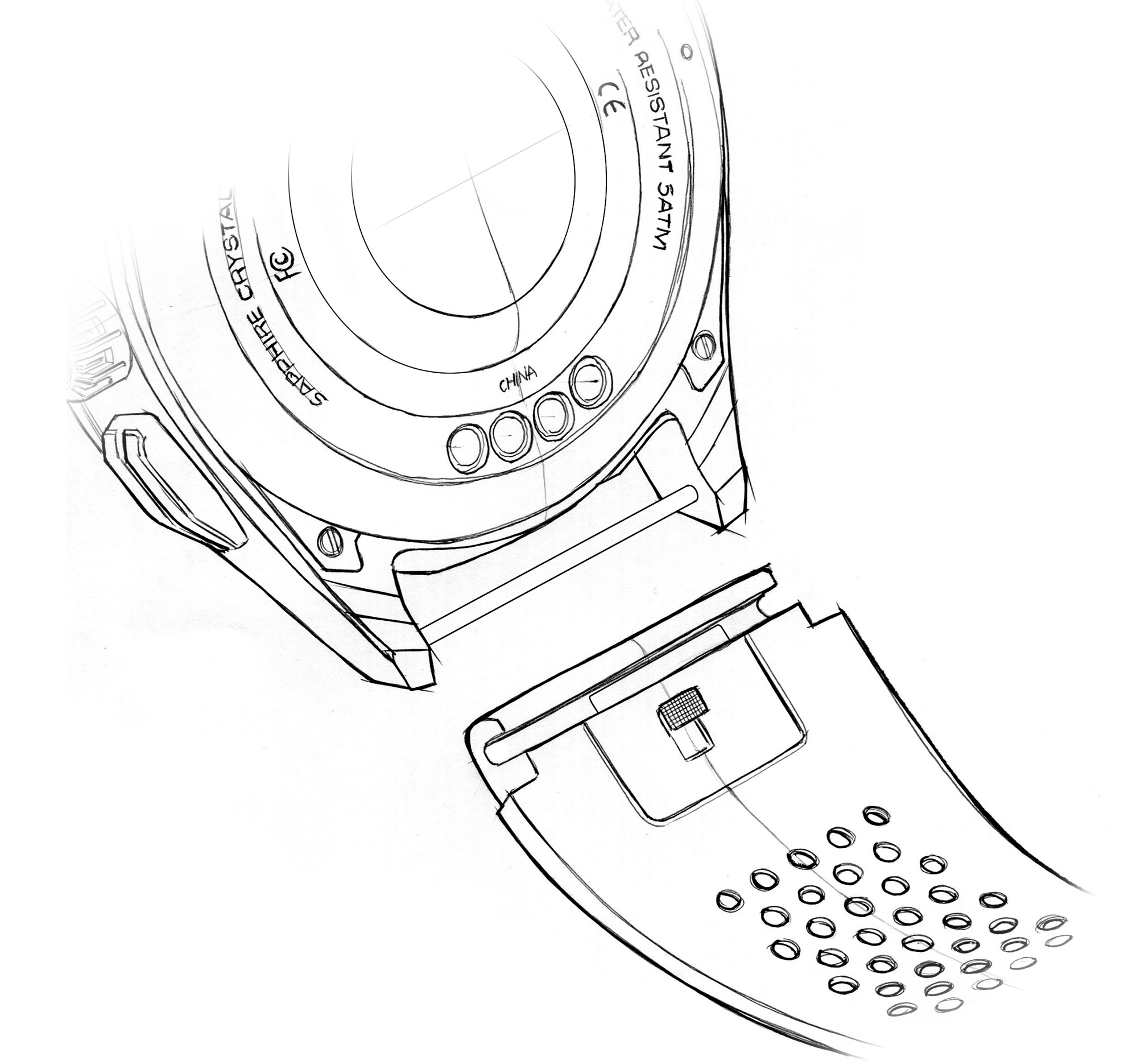
Quick-release systems for straps, allowing for tool-free and easy swapping of straps, should also be much more common than it is today. Some brands, like Hublot, Cartier, TAG Heuer, and others have developed their own proprietary push-button systems to allow for this while others use spring bars with little protruding handles that allow one to remove them without a tool. Watches of select few brands, such as Rolex, are very rarely, if ever worn, on non-OEM straps or bracelets — just think about when was the last time you saw a modern Rolex worn on anything other than the bracelet it originally shipped with. Still, brands should make swapping straps a hassle-free and, preferably, a tool-free experience: The secure fit of a strap is, of course, essential to prevent the loss of the watch, but with today’s precise manufacturing techniques — which have come not just to metal components but also to leather and rubber straps, too — allow for some fantastic fun to be had with new straps.
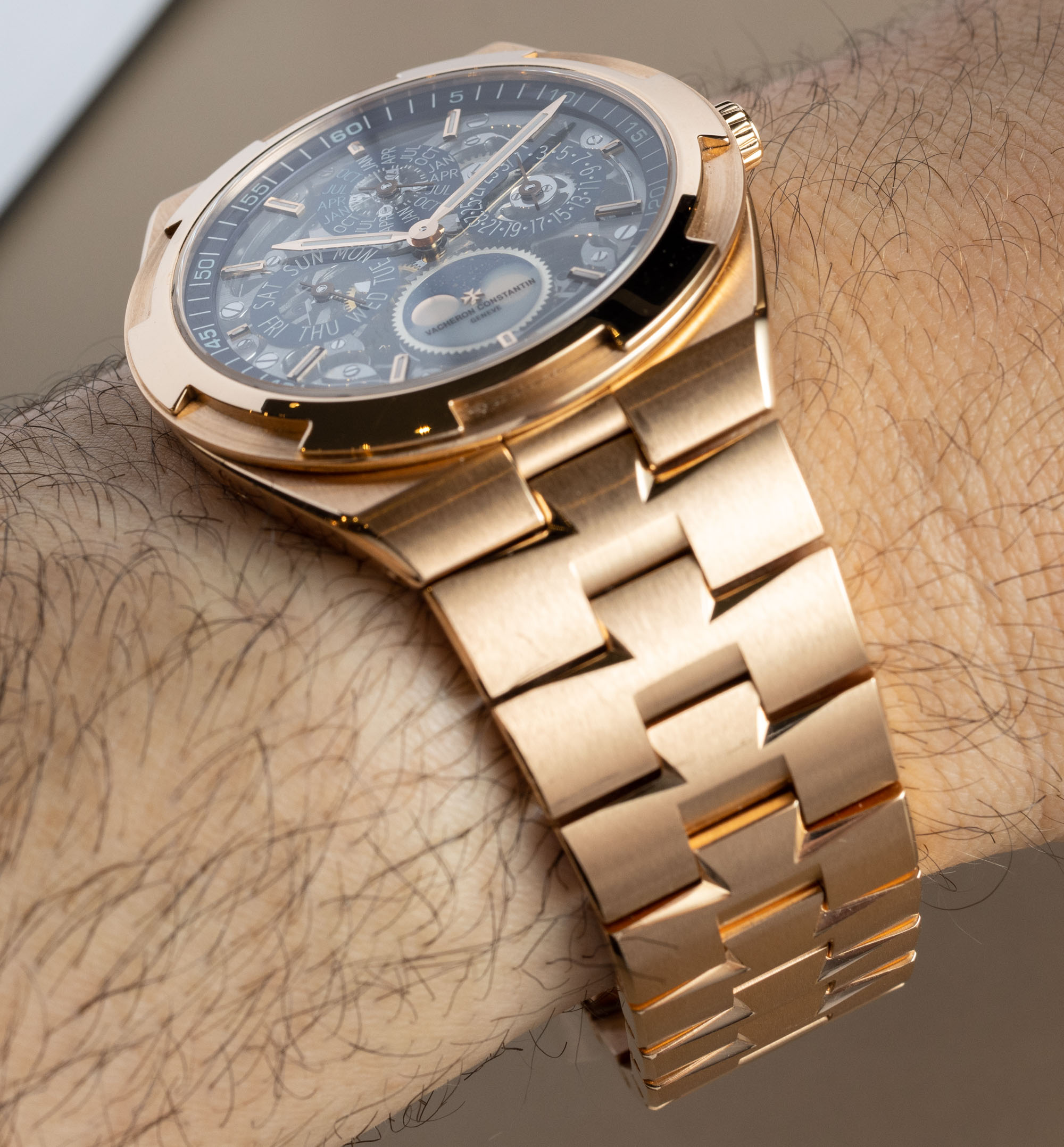
Although hardly “an additional feature,” the slim design of a case (and to enable that, a movement) is often overlooked when it comes to wearing comfort. And although the big watch trend has turned, many still prefer the bulk and heft of 13-15 millimeter-thick watches — for those folks, I would recommend wearing a thin or ultra-thin watch for a while. The effect sub-10mm cases have on comfort cannot be overrated: They slide under cuffs and sleeves with ease, don’t get constantly caught on other objects, and keep the center of gravity low and close to the wrist. It’s a huge win for comfort, and many of these watches have lots of cool features and visual elements that help offset their lack of physical volume.
Summary
Watch wearing comfort is different for everyone, and we all have our own personal preferences. The incredible diversity of watches, irrespective of the price point, beautifully illustrates just how many different sizes, shapes, and materials customers might prefer, and we can all be thankful for that. After all, has been said and done, though, comfort is very much a binary thing: A watch is either comfortable to wear or it isn’t. And in the mid-to-long term, uncomfortable watches will be sold off or be spending most of their time in drawers or safes, and not on people’s wrists. This is a shame because they certainly have something good going for them if they were purchased in the first place.
Our goal with the first installment of Grinding Gears is to highlight some of the common shortcomings of modern watches when it comes to wearing comfort, provide some pointers on what to look for when shopping for your next watch, and highlight some effective solutions that are still yet to be embraced by too many modern watch brands. Hope to catch you for the next one, and be sure to let us know your favorite watches to wear and your biggest disappointments when it comes to ergonomics and comfort.

